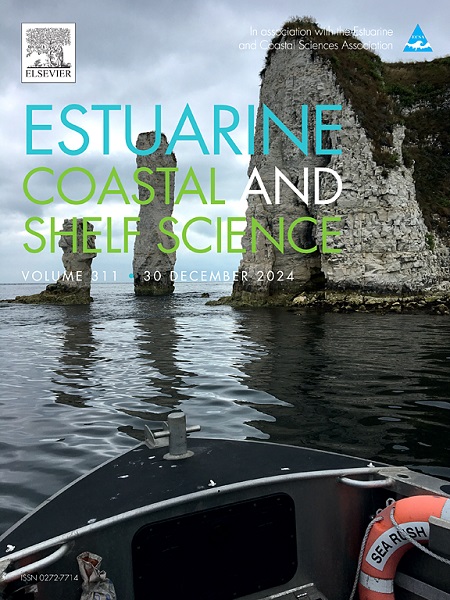Are willows suitable for flood defense? Quantifying mechanical properties of willow species
IF 2.6
3区 地球科学
Q1 MARINE & FRESHWATER BIOLOGY
引用次数: 0
Abstract
The use of temporary willow wetland forests as nature-based flood defense requires reliable predictions of branch resistance to loads, due to either hydrodynamic forces or strong winds, while accounting for variations across Salix species and varieties, growth environments (e.g., local salinity), and shapes (e.g., shrubs vs. trees, natural vs. pollarded). The Salix genus comprises hundreds of species, each exhibiting high intraspecific diversity with numerous subspecies and genotypes. However, to assess their suitability for flood defense, it is crucial to understand their mechanical properties, which have been documented for only a few species and often using differing methodologies. Quantifying and understanding the variation in mechanical properties of willow branches can improve vegetation-wave models and their use in flood risk assessments. We studied 18 Salix species, varieties and hybrids (shrub and tree type, including the most common species of riverine wetland forests), various specimens of one species (S. alba) along a salinity gradient and two growth forms: natural and pollarded. Sampling took place in Belgium and the Netherlands. We conducted 3-point bending tests and quantified absolute and relative flexibility and strength (maximum load and extension, modulus of elasticity (MOE) and modulus of rupture (MOR)). For all species, the thicker the branch, the greater its mechanical strength. Tree type species were more flexible with lower modulus of elasticity and shrub type species stronger with higher modulus of rupture. S. alba was amongst the most flexible species and S. purpurea the strongest. We found a large variability for natural branches and far less variability for pollarded branches. The salinity gradient had no effect on mechanical properties. Our study showed that the type of species and variety as well as pollarding affect the mechanical branch properties. The values of tree mechanics found in this study can be used as input for models, and their application in nature-based flood defense solutions.

柳树适合防洪吗?柳树种类力学特性的量化
使用临时柳树湿地森林作为基于自然的洪水防御需要可靠的预测树枝对负载的抵抗力,由于水动力或强风,同时考虑柳树种类和品种,生长环境(例如,当地盐度)和形状(例如,灌木与树木,天然与授粉)的变化。柳属包括数百个物种,每个物种都表现出高度的种内多样性,具有许多亚种和基因型。然而,为了评估它们对防洪的适用性,了解它们的机械特性是至关重要的,这些特性只记录了少数物种,并且通常使用不同的方法。量化和理解柳枝力学特性的变化可以改进植被波模型及其在洪水风险评估中的应用。我们研究了18种柳属植物、品种和杂交种(灌木和乔木类型,包括河流湿地森林中最常见的物种)、一个物种(S. alba)的不同标本,以及两种生长形式:自然生长和授粉生长。抽样在比利时和荷兰进行。我们进行了三点弯曲试验,并量化了绝对和相对柔韧性和强度(最大载荷和拉伸、弹性模量(MOE)和断裂模量(MOR))。对所有物种来说,树枝越粗,其机械强度越大。乔木型树种具有较低的弹性模量,而灌木型树种具有较高的断裂模量。白葡萄是最灵活的物种之一,紫葡萄是最强的。我们发现自然树枝的变化很大,而授粉树枝的变化要小得多。盐度梯度对材料的力学性能没有影响。我们的研究表明,种、种的类型和授粉对树枝的力学性能有影响。本研究中发现的树木力学值可以作为模型的输入,以及它们在基于自然的防洪方案中的应用。
本文章由计算机程序翻译,如有差异,请以英文原文为准。
求助全文
约1分钟内获得全文
求助全文
来源期刊
CiteScore
5.60
自引率
7.10%
发文量
374
审稿时长
9 months
期刊介绍:
Estuarine, Coastal and Shelf Science is an international multidisciplinary journal devoted to the analysis of saline water phenomena ranging from the outer edge of the continental shelf to the upper limits of the tidal zone. The journal provides a unique forum, unifying the multidisciplinary approaches to the study of the oceanography of estuaries, coastal zones, and continental shelf seas. It features original research papers, review papers and short communications treating such disciplines as zoology, botany, geology, sedimentology, physical oceanography.

 求助内容:
求助内容: 应助结果提醒方式:
应助结果提醒方式:


